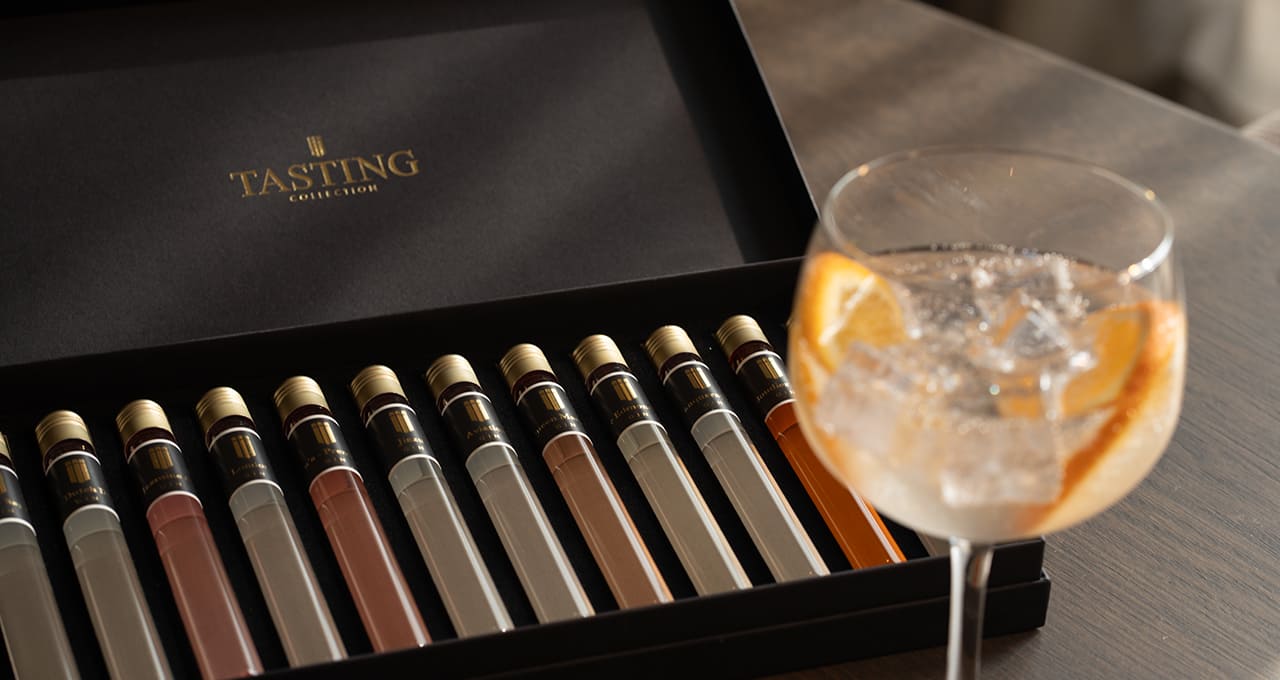Checkout using your account
Checkout as a new customer
Creating an account has many benefits:
- See order and shipping status
- Track order history
- Check out faster
Gin
Already know your favourite gin? Tasting Collection has a huge selection of the best gins you can order directly. Would you rather taste several gins before making your choice? Then check out our Gin Tasting Collections.

Gin
A wide range of gin
Gin seems like a very simple drink and in is at its core. All you have to do is flavor neutral alcohol with various botanicals. But the good gin producers go much further in their search for the perfect gin. So what exactly is perfect? That is different for everyone, because, after all, tastes differ. However, high quality is paramount for all gin makers. So whether a gin suits your tastes or not, you can bet that the producer is doing everything possible to ensure quality.
Anyone who takes a look at the wide range of gin on Whisky.com will immediately understand what we mean. In particular, it is the botanicals in which a great deal of care is taken. For example, there are gin producers who boast that their herbs, spices and other flavorings are local. Think locally picked sea fennel and elderflower, for example, or citrus fruits that grow only in Japan. It's the way to make a gin distinctive.
The history of gin
Gin as we know it today has its origins in the mid-17th century. At that time, Genever was very popular in Holland and Belgium, where expert distillers marketed malt wine and other grain distillates. They added extra flavor with juniper, coriander and anise, among others. Jenever was discovered by the English when William of Orange's English army went into battle with Dutch soldiers. The Dutch drank their courage with a shot of gin. The term "Dutch Courage" is derived from this tradition.
When William of Orange came to power in 1688 and captured the English throne, he encouraged the production of English drinks. By imposing high import taxes on foreign drinks, the popularity of gin exploded. Gin was a descendant of Dutch gin. Juniper berry was the dominant flavor, but the expertise of English distillers sometimes left something to be desired. This was mainly because basically anyone was allowed to make gin. An aspiring distiller only had to make his intentions public, for example with a bill on the front door, and wait ten days.
Gin was cheap and easily available. Logically, then, it was hugely popular in London at the beginning of the 18th century. In the centuries that followed, the quality continued to improve and that popularity slowly spread throughout the rest of the world.
This is how gin is made
The production of gin basically falls into two categories: distilled and infused gin. The simplest way to make gin is infused gin(compound gin in English). Cheaper gins are made this way, but there are also many high-quality gins that follow this method. This type of gin is made by soaking botanicals in neutral alcohol or simply adding flavor extracts to alcohol.
Distilled gin is made by adding botanicals to the still. London Dry Gin is a more strictly regulated version of distilled gin: only water may be added afterwards. Typically, distilled gin may still have an infusion added to it afterwards, such as cucumber or rose petals.
The perfect Gin & Tonic
Gin & Tonic is one of those drinks that never gets boring. And because there are so many great tonics available these days, you can keep experimenting. In our webshop you will find dozens of different tonics. But how do you make the perfect Gin & Tonic? A perfect serve, as it is also called, actually varies by brand. One gin goes better with a certain tonic than another.
Personally, we like to use a highball or Collins glass for a Gin & Tonic, but of course you can decide what you like best. The ratio is usually 1 part gin to 3 parts tonic. Garnishing depends on the gin you use. For example, check out what botanicals are in the gin. You're bound to find good inspiration there.
Buy cheap gin online
With the large selection of Tasting Collection you will always succeed. Take your time to store in our webshop and take advantage of our favorable prices. When you've found your favorite, ordering is a breeze. We'll make sure you get your gin quickly, of course.












